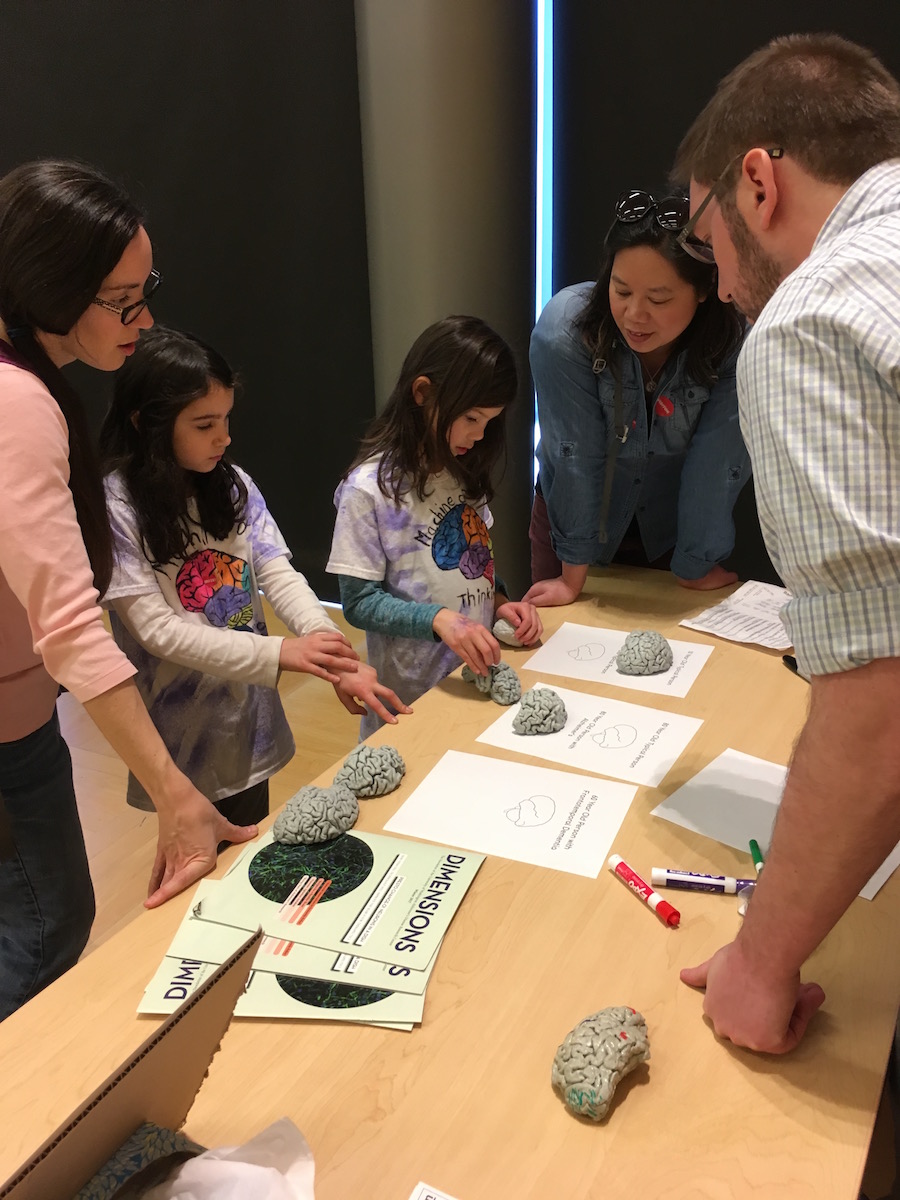Demo video HERE
To make it simple for people to get a 3D print of their brain, if they have an MRI scan
Currently it takes a lot of technical knowlege to go from an MRI scan to the files needed for 3D printing (.stl). I'd like to make it so that anyone can do it.
User story
As a user, I navigate to a website where I upload an MRI of my brain, and give my email address. About 8 hours later, I check back on the site to find a link which allows me to download two .stl files: for the right and left side of my brain. I can also see an image of what my brain looks like. After that, I can take the .stl files to my local makerspace, or use a 3D printing service (shapeways, xometry, etc) to get a 3D print of my brain.
3D prints used for an outreach event (75% scale):
Eventually the users, but for now - Human Connectome Project data is available to be mounted on S3
Going from the MRI to the .stl is computationally expensive (8h on a typical workstation). I think it makes sense to launch a container separately for each brain. I can manage these containers with AWS Batch.
The user data, information on where to find the associated files, and basic process info will be stored in a DynamoDB database.
Uploading and downloading large files (~30MB MRI files, 16MB .stl files) through Flask with many concurrent users may be a challenge. It also may be neccessary to automatically delete the large files after a certain amount of time (a week?), but user info will be kept in the database.
The MRI-to-stl process is mostly solved (albeit inefficiently and somewhat unreliably). In a previous hackathon project, I built a docker container to accomplish this at a companion repository here: https://github.com/danjonpeterson/brain_printer . You could think of this project as scaling-up and making a public-facing interface to this process.
For a "stress-test", I've used the publicly available MRI data from the Human Connectome Project, which is conveniently available to mount as an S3 bucket. I've tried it out with 50 brains simultaneously, and the Batch queue was able to work through them all within 24 hours.
There are multiple avenues to monetization:
- Charging the user directly
- Advertising and/or partnering with 3D printing services
- Contracting with research labs for rewarding volunteers
(There are ~2700 active NIH research grants involving human brain MRIs)
The application currenty does:
- Accept a ~30MB MRI over the web
- Do the processing in a an container launched for each user
- Serve a link to the two R/L ~8MB .stl files
- Give some QA info - some way to visually inspect the result
- Handle (at least) 20 concurrent jobs in a stress-test with the HCP data
- Once the AWS Batch compute enviroment reaches capacity, further jobs simply wait in the queue.
- Add UI for browsing & selecting the correct scan on a DVD of MRI data
- Actually print a brain from a remote user (typical ~36h print time)
- Automatically delete files after some amount of time (a week?)
- Optimize mesh file size
- Speed up the core process (MRI -> .stl)
- Add a link to get a quote and send the .stl directly to 3D printing services
- Take some address and billing info

